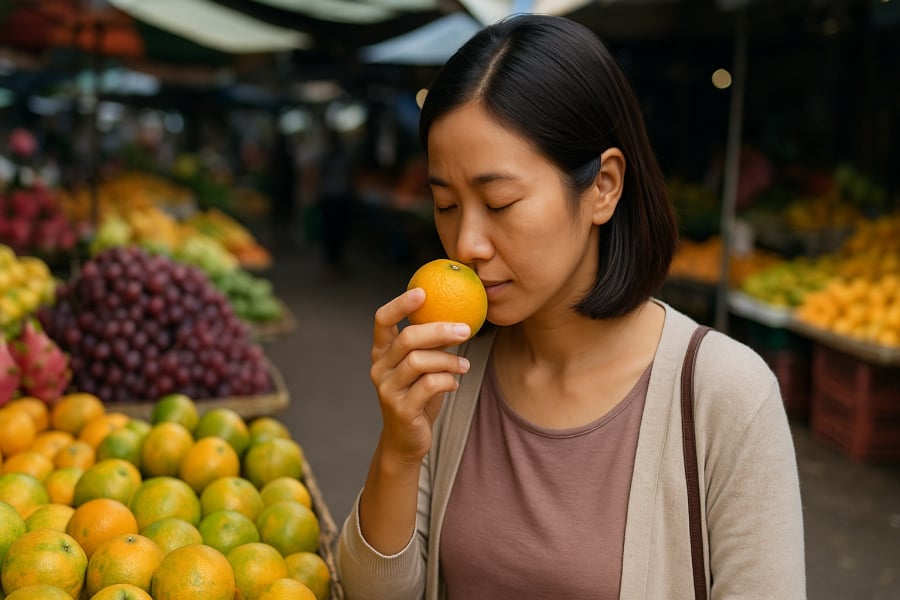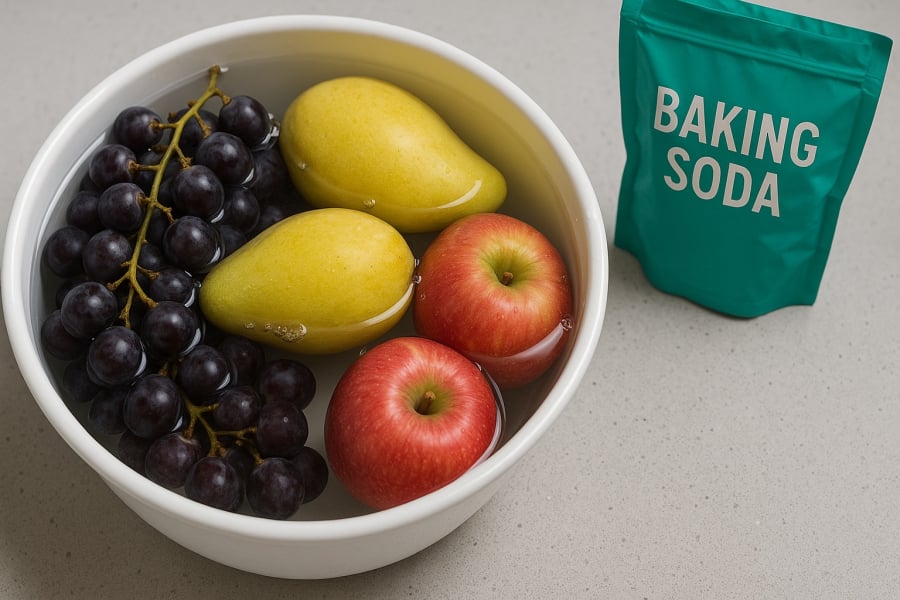Judging a Book by Its Cover: How to Spot Quality Fruit
One of the most noticeable signs when it comes to identifying quality fruit is its outer appearance. According to Ms. Thu Ha, a long-time fruit trader at Long Bien wholesale market in Hanoi, fruit that has been soaked in chemicals often has an abnormally shiny, vibrant, and uniformly colored exterior.
“For instance, if you see a cluster of grapes that are all perfectly round and unnaturally shiny without the characteristic waxy coating, they’ve likely been treated with chemicals to enhance their appearance,” shares Ms. Ha.
On the other hand, fresh fruit usually has a natural color with some slight blemishes or darker spots, which is perfectly normal. Fruit with slightly rough skin, signs of sunburn, and perhaps a less appealing appearance are often indicators of garden-fresh produce that hasn’t been treated.
The Power of Scent: A Tell-Tale Sign
While many people overlook this step when shopping for fruit, those who are passionate about it know that scent is an extremely effective indicator. Naturally ripened fruit will emit a subtle, characteristic aroma, whereas fruit soaked in chemicals often lacks any scent or has an unusual odor.
Ms. Huyen Trang from Binh Thanh District, Ho Chi Minh City, who specializes in buying and reselling fruit online, shares her experience: “I often smell the stem area – naturally ripened oranges, tangerines, or mangoes usually have a very pleasant scent. If I can’t smell anything or there’s a slightly strange odor, it’s often due to the fruit being treated with chemicals.”

Don’t Forget the Stems and Leaves
Another important detail to observe is the freshness of the stems and any accompanying leaves (if present). Fruit that has been recently picked usually has fresh, green stems that are not wilted. Additionally, for certain types of fruit like cherries, grapes, or lychees, the presence of fresh buds or unwithered leaves indicates that they were recently harvested and haven’t been stored for an extended period.
On the other hand, dark, wilted stems and dry, brittle leaves, or an unusual odor are signs that the fruit has been stored for a long time and may have been treated with chemicals to maintain an artificial freshness.
The Sound and Feel of Quality Fruit
In addition to visual inspection, it’s a good idea to use your sense of touch to feel and gently press the fruit to gauge its firmness and freshness. Slightly squeeze or tap the fruit to feel its firmness and listen for a dense, solid sound. Naturally ripened fruit usually has a moderate firmness, and when tapped, it emits a thick, dull sound. Conversely, fruit that has been waterlogged or forced to ripen is often soft and mushy, producing a hollow sound that lacks vitality.
This is a trick that many experienced fruit sellers employ, especially when dealing with watermelons, mangoes, jackfruits, or pomelos. With a little attention to these details, you can select fruit that is sweet and wholesome.
Seasonal Fruit: A Smarter and Safer Choice
Choosing fruit that is in season is always a wise decision. During their natural season, fruits grow and ripen without the need for growth stimulants or forced ripening. Moreover, as they are consumed quickly, they are less likely to be stored for extended periods.
For example, dragon fruit is in season from May to July, longan from August to September, and durian from June to August. Buying fruit in season is not only more affordable and delicious but also safer, as it reduces the likelihood of consuming fruit treated with excessive chemicals.
Building Trust with Your Fruit Vendor
When shopping at wholesale markets, don’t hesitate to befriend a few reputable vendors. Long-standing sellers with a stable customer base tend to prioritize quality to maintain their reputation. They are also usually transparent about the source of their produce, whether it’s from the northern or southern regions of the country or imported.
Ms. Kim Ngan, the owner of a fruit wholesale shop in Hoc Mon District, Ho Chi Minh City, shares her philosophy: “Regular customers often ask about the arrival time and origin of the fruit. Having been in this business for many years, I adhere to the principle of only selling what I would eat myself, as maintaining customer trust is paramount.”
The Home Soak Test for Added Assurance
Finally, if you still have doubts, you can perform a simple test at home by soaking the fruit in a mild salt water solution or baking soda solution. Here are the steps you can follow:
- Rinse the fruit with cold water.
- Soak it in a mild salt water solution (1 teaspoon of salt per liter of water) for 10-15 minutes.
- Alternatively, use half a teaspoon of baking soda per liter of water and soak for about 15 minutes.
- Observation: If the water becomes cloudy or frothy, it may indicate the presence of chemical residues on the fruit.
According to a study referenced by the Voice of Vietnam, this method can remove up to 90% of pesticide residues on the surface of fruits and vegetables.

Final Thoughts
Selecting quality fruit at wholesale markets isn’t too difficult if you keep these tips in mind. Get to know reputable sellers, choose fruit that is in season, and pay attention to the subtle signs that indicate freshness. Remember, “perfect-looking” fruit isn’t always an indication of quality. Sometimes, a slightly imperfect appearance is nature’s way of telling you that it’s wholesome and natural.”






























